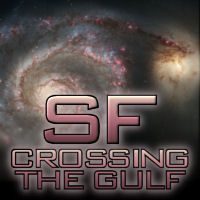Roundtable on Non-Fiction
James Patrick Kelly
Well, since Asimov’s is about to run a column I wrote in praise of the online Science Fiction Encyclopedia, let me cite that, in all its incarnations, as a reference I use regularly. Pretty much indispensible, it says here. I have a thing for dictionaries of slang: I own Barron’s American Slang and The Urban Dictionary but my favorite is the venerable Thesaurus of American Slang. Speaking of dictionaries (sort of), the book I have recourse to most often as I write is the visual dictionary What’s What. It’s out of date and may be out of print, but I’ve used it so much that the cover is falling off. I should probably spring for one of the competing versions. For me, knowing what specific parts of things are called is kind of my magic feather for worldbuilding.
Back in the day (here I betray my advanced age!) I used to keep the Sears Catalogue on my reference shelf. More recently, when I need to write about furniture, say, or women’s clothing, I borrow from the glowing descriptions in online shopping sites. Don’t tell the copywriters at Land’s End! There are some useful titles in the Writer’s Digest Science Fiction Writing Series edited by Ben Bova (Time Travel and World Building) although these are in need of updating and the Howdunit Series for mystery writers (Private Eyes and Armed and Dangerous).
Books I recommend to my students from time to time are James Woods How Fiction Works, Nancy Kress’s Beginnings Middles and Ends and a book that helped me when I was starting out, Those Who Can, edited by Robin Scott Wilson in 1973, which is a mix of fiction and craft essays by writers I was reading as a kid. FYI, RSW did a follow-up volume in 1996 called Paragons along the same lines that collected stories and essays by my generation (including, gulp, me).
Terry Bisson
Jim’s post reminds me that I used to use Victoria’s Secret catalogs for my Playboy stories.
Gardner Dozois
As research, or as inspiration?
Terry Bisson
Catalog prose style. Seriously.




Pingback:SF Tidbits for 3/15/12 - SF Signal – A Speculative Fiction Blog
Mr. Letson,
What are the Advent titles, Tuck Encyclopedia ,the old Day-MITSF-NESFA Indexes and the Bill Contento’s newer work you are referring to ? I am only beginning my SF research hobby and I am curious about these books.
Can you please provide more information, such as full titles and the authors names.Thanks.
James–Reaching to and reading from the shelves I can see from my keyboard:
Donald Tuck, The Encyclopedia of Science Fiction and Fantasy, 3 vols. The ur-encyclopedia, a monument of amateur scholarship, and now superceded by generations of later work. Still, it was a Very Big Deal back in the 1970s and 80s.
The rest of the books are various indexes to fiction published in the magazines and anthologies. Donald B. Day produced his pioneering Index of Science Fiction Magazines, 1926-1950 in 1952. G.K. Hall published a corrected edition in 1982. Neither is easy to find now.
The follow-ups includedThe MIT Science Fiction Society’s [MITSF] Index to the S-F Magazines, 1951-1965 (1966) and Norm Metcalfe’s Index of Science Fiction Magazines, 1951-1960 (1968), and a long series of year-by-year indexes from NESFA (the New England Science Fiction Association). The Bill Contento got rolling with his Index to Science Fiction Anthologies and Collections (G.K. Hall, 1978) and a follow-up covering 1977-83 (Hall, 1984), and then a long series of annual indexes in collaboration with Charles Brown: Science Fiction, Fantasy, & Horror: [year] (Locus Press, 1984-).
If you’re serious about SF bibliography, hunt down a copy of the late Neil Barron’s Anatomy of Wonder–the last edition is the 5th. What’s wonderful about these books is that, with the exception of the Anatomy, they were compiled by amateur scholars and researchers. (There were bibliographies and studies produced by literary academics in those early days, but that’s a different list and a different story. Nor have I mentioned the incredible work of E.F. Bleiler.)
What about _Brave New Words: The Oxford Dictionary of Science Fiction_
http://www.concatenation.org/nfrev/brave_new_words.html
Every aspiring SF&F author should read Ursula Le Guin’s critical essays on the uses and purpose of fantasy, especially those collected in “The Language of the Night” (1979). If nothing else, just read the essay “From Elfland to Poughkeepsie” to see how to differentiate real fantasy from faux fantasy in your writing.
Pingback:Roundtable on John Clute’s Giraffe | Animals